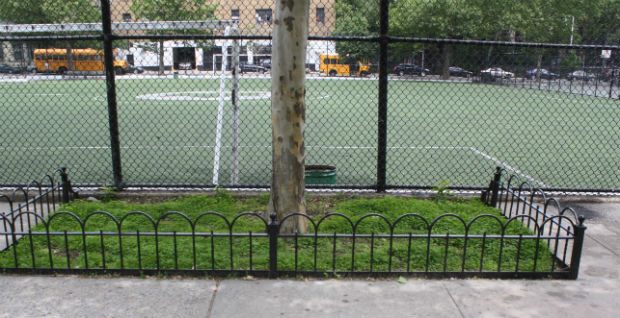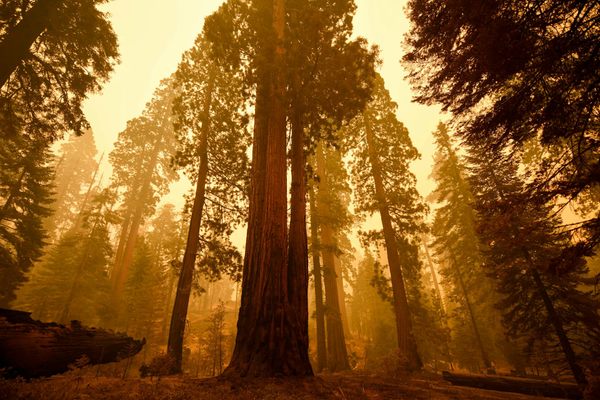Give Trees Some Space
Even city trees need some boundaries.

City trees, like all urban dwellers, have to live out their days in small spaces, scrunching their roots under sidewalks, soaking up the sun that sneaks between the buildings while they can. We expect trees, like everyone else, will earn their keep in our cities, by providing shade, cleaning up the air, giving our eyes a green break from the grey of human habitation, and soaking up the rain that falls on the streets. It’s a lot to ask, and, according to a new study from Columbia University, if we want trees to do their jobs well, we need to give them a lot more space.
More specifically, the study examined the effects of small fences that guard the soil immediately around trees. Often, these patches of dirt are ill-used—soaked with dog pee and trampled over by inattentive pedestrians. When people keep walking all over a tree’s personal space, the dirt gets compacted and becomes less porous, making it harder for the ground and the tree to sop up rain.
The fences, in theory, keep people from treading all over the trees’ little patches of soil. The study examined the impacts over time, and the fences made a surprisingly large difference. With just a simple guard around it, a tree could soak up water six times faster than trees without guards.

When trees can absorb more water, they take the pressure off human infrastructure to deal with rainfall, especially in large storms. Some cities still have combined storm and sewage overflow systems, so that if enough rain falls, that water combines with sewage and gets dumped into canals, oceans, or other places that can absorb the volume.
One alternative to fencing in trees is creating “bioswales”—little patches of plant life designed to absorb stormwater. But, as the researchers note, in New York City, people have complained that “some of the 3,000 bioswales New York City has installed in the last five years in Brooklyn, Queens, and the Bronx are ugly.”

Indeed, these places are designed so that they catch stormwater flowing across the streets of New York. The streets of New York are also full of trash, and the bioswales quickly become de facto trash filters. They generally don’t end up as the idyllic patches of green portrayed in design plans.
Since people can’t be trusted to give trees just a little bit of leeway, the researchers suggest that more trees be given small guards—even cheap ones can make a dramatic distance. Urban trees are already living strange and probably lonely lives; the least we can do is give them a little space to drink and breathe.





















Follow us on Twitter to get the latest on the world's hidden wonders.
Like us on Facebook to get the latest on the world's hidden wonders.
Follow us on Twitter Like us on Facebook